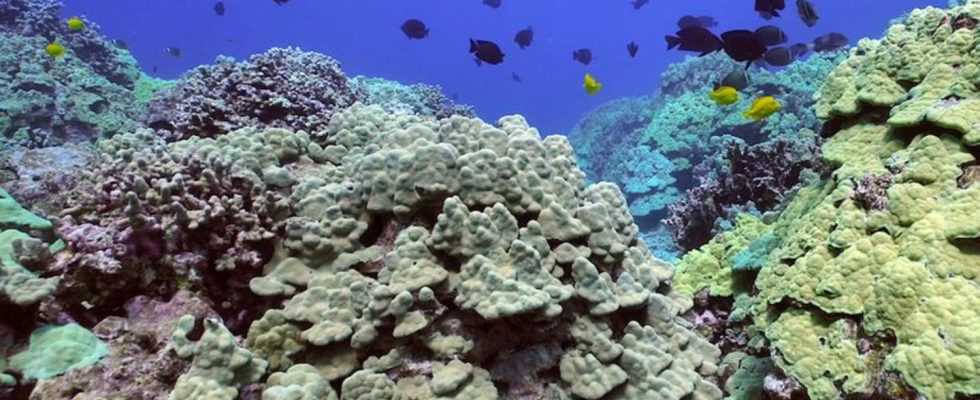ecosystem
Study on Conservation Measures for Threatened Coral Reefs
A coral reef off the island of Hawaii. photo
© Greg Asner/ASU/dpa
Corals are cnidarians that live with algae in a mutually beneficial community. This community is increasingly at risk due to ocean warming as a result of climate change. What to do?
Reefs in areas with less overfishing and less pollution, such as from sewage or runoff, showed more stable growth. In stressful situations, such as after rising sea temperatures, coral destruction was lower there. In addition, the reefs recovered more quickly from the coral bleaching. This is what the group led by oceanographer Jamison Gove from the US climate agency NOAA and marine biologist Gareth Williams from Bangor University in Great Britain writes in the journal Nature.
Coral reefs are increasingly at risk worldwide due to ocean warming as a result of climate change. A fading of the colorful hard corals is called bleaching. Corals are cnidarians that live with algae in a mutually beneficial community. At high temperatures, the corals repel the algae and lose their color.
The scientists refer to the goal set by the international community of states to place at least 30 percent of the world’s land and sea areas under protection by 2030. According to the study, in order to strengthen and heal the threatened coral reefs, human influences – in combination on land (e.g. sewage pollution) and in the sea (e.g. overfishing) – must be kept to a minimum.
Article journal Nature

